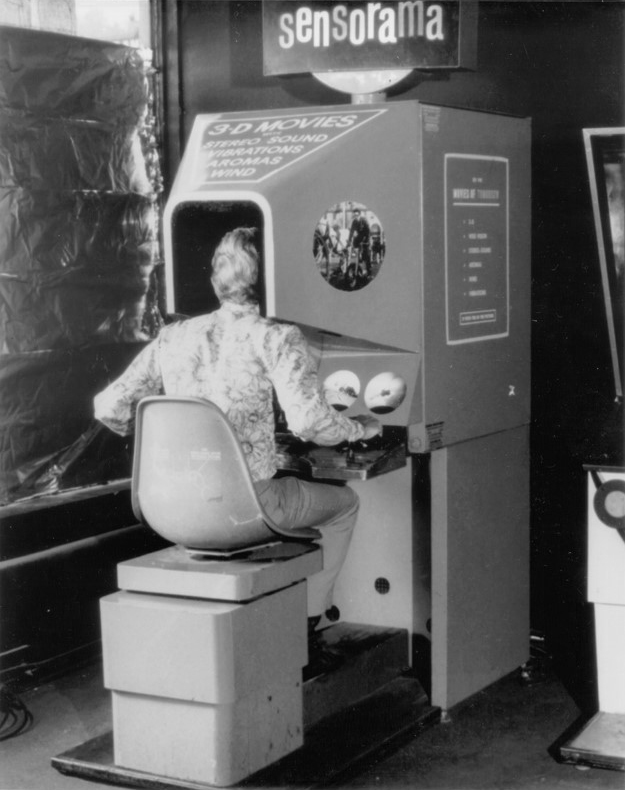But to get to today’s milestones, it must take decades of development with improvements as well as countless failures. Let’s take a look at the most general history of the formation of VR technology in the following article!
1. The history of Virtual Reality
In the mid-50s, Morton Heilig invented the SENSORAMA simulation device. This is a control device that consists of a glass entity monitor, fan, odor generator, audio speakers and a movable chair. He also invented television screens attached to equipment to watch 3D movies. This is considered a premise for the development of VR in the future.
In 1960, Morton Heilig invented the Telesphere Mask (also called called “Head-mounted display -HMD”). This is a device with a lens display and a strap.
Based on HMD, in 1961, Headsight device was developed. This is the first step in the development of VR headsets. It includes a monitor and video monitoring system linked to a camera system. It is used in dangerous military situations to support pilots in low-light environments.
In 1965, a computer scientist named Ivan Sutherland released the “Ultimate Display”. When using this display, one can see a virtual world appear like the physical world. This has driven the entire vision for Virtual Reality. Sutherland’s concepts include:
- A virtual world that can be observed through an HMD.
- A calculator to maintain the model in real time.
- The ability for users to manipulate real objects in the most intuitive way.
After that, in 1968, Ivan Sutherland and Bob Sproull created the first VR/AR display system. It is connected to a computer rather than a camera.
In 1987, Jaron Lanier first coined the term “Virtual Reality”.
2. Conclusion
In short, VR technology has been in a long way, but it hasn’t stopped yet. Thanks to the development of software and hardware products, VR technology has been known around the world. Today VR has become a pioneer industry in the era of 4.0 technology. The VR market grows every year by about 21%. In the coming years, VR technology will grow stronger and be more applied in real life.

